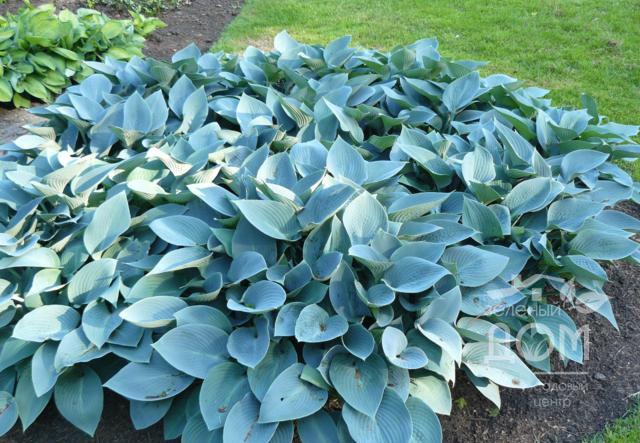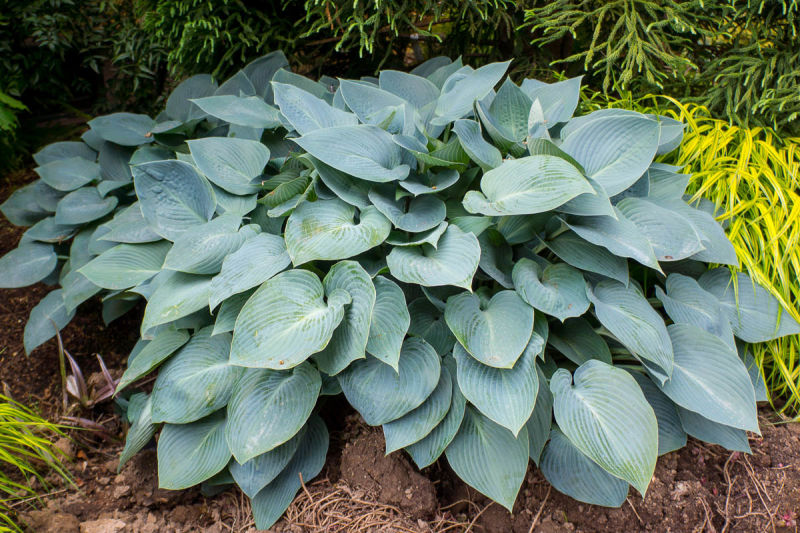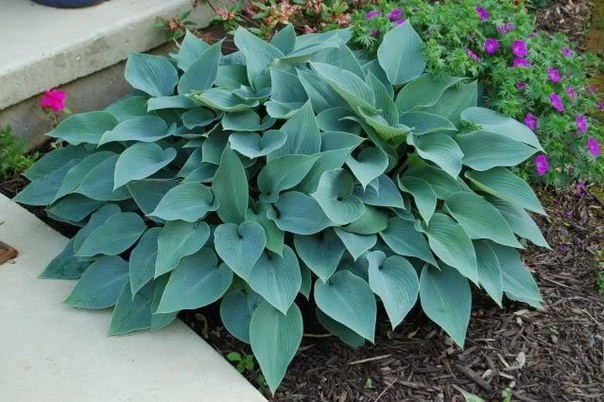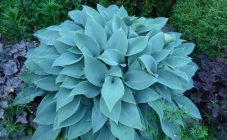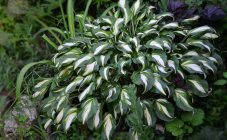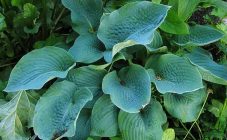Hosta Halcyon is rightfully considered the queen of ornamental deciduous plants. It is spectacularly different from all other vegetation, thanks to the deep blue of the heart-shaped leaves. Hosta leaves are covered with indelible silvery waxy coating. It not only helps the plant retain moisture and decorate the site, but also protects the leaves from damage, as well as the negative effects of sunlight.
Cultural history
Hosta Halcyon has long been grown in gardens in China, Korea and Japan. In Europe, the plant appeared at the end of the 17th century. Hosta appeared in Russia in the mid-90s of the last century.
The genus name of these plants was given in honor of the Australian botanist N. T. Hosta. The plant has another name - funkiya, which was proposed by K. Sprengel. Despite the fact that many growers know the host by the name of the function, Hosta is still considered more correct, since it was announced first.
Description
Hosta means "calmness" in English. According to the descriptions, Hosta Halcyon is one of the bluest hosts. This plant perfectly keeps its color for a long time, up to the middle of summer.
Hosta Halcyon favorably stands out from other plants not only in appearance, but also in characteristics. Its deep blue and heart-shaped leaves attract attention. The height of the bush is about 50 cm. The leaves are large enough (16x10 cm) and have a dense texture, covered with deep longitudinal grooves.
The flower stalks of the plant are practically not leafy, their height is about 80 cm, width - up to 70 cm. When blooming, the flowers have a funnel-shaped shape and a characteristic purple hue. Aromatic flowering, lasts about 21 days. Hosta blooms in July-August.
After flowering, small leathery capsules appear on the plant, in which black seeds ripen.
Growing features
All Halcion varieties are grown and propagated in the same way. The most optimal places are shaded areas. The soil should be nutritious, well-moisturized, drained, with low acidity. If you choose the right place for planting, then in this case the host will delight others with a chic and rich shade of foliage, as well as long-term and abundant flowering.
You can plant a hybrid in open ground both in spring and autumn. In this case, the following sequence of actions is required:
- It is necessary to prepare a planting pit of such a size that the roots of the seedling fit comfortably and freely in it.
- A small amount of mineral and organic fertilizers is required at the bottom of the planting pit. Only then is the root system placed in the pit.
- After filling the plant, the soil must be carefully tamped and watered with settled water.
Subsequently, care consists in systematic watering, which is carried out no more than once every 4 days, fertilizing, loosening and removing weeds. It is necessary to water the plant so that the soil is soaked to a depth of at least 50 cm. Despite the fact that late hosta Halcyon is a frost-resistant plant, mulching should be carried out before the onset of cold weather.
During cultivation, the division method is used to prevent the growth of the bush. It keeps the host in perfect condition. The procedure is required in early spring, as soon as the first shoots appear, or at the end of summer. You need to take care of sparse plants in the same way as when planting.
Hosta can be propagated either by dividing the bush or by cuttings. The breeding process is recommended in early spring or autumn. May and September are considered the most optimal.
Before digging a bush, it is watered abundantly, only after that is dug up. Then they divide it into parts, each of which should contain about 2 sheet sockets. After dividing, the plant is immediately planted in a permanent place.
As for cuttings, the hybrid variety can be propagated in this way throughout the summer. The process of cuttings is as follows: young shoots with a heel are separated from the plant. In this case, the leaves are cut off by a third, the shoots are planted in a shaded place. In order for the cuttings to begin and begin to develop, at first it is recommended to cover them with plastic bottles. In the first days after planting, there is a loss of turgor, but after a few weeks, the cuttings take root, and everything returns to normal.
Advantages and disadvantages
Hosts are the undisputed leaders of the shady garden. In addition, the plants have practically no flaws. It is difficult to find a horticultural crop that has so many benefits. All varieties are easy to grow and do not require complex maintenance.
Even though the hybrid prefers to grow in the shade, it can also feel comfortable in sunny areas. Halcion gets along well with other hosta varieties as well as a variety of plants.
The only drawback is that the plant grows rather slowly. Therefore, in the early years, experts recommend planting annual flowers between young plants. Moreover, over time, the host will close up and drive out all its neighbors, forming a beautiful luxurious bush.
Hosta Halcyon is considered one of the most common and leading perennials. It has been widely used in landscaping and landscaping, both adjoining territories and gardens and parks. With its help, you can create a unique design for any site.
